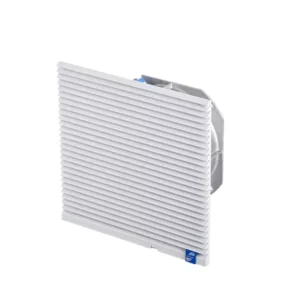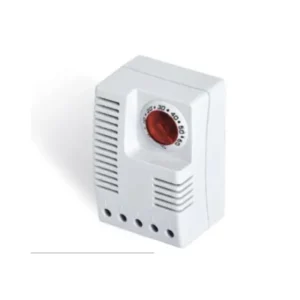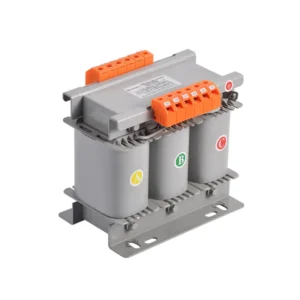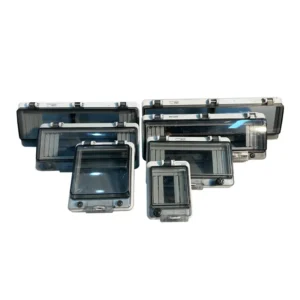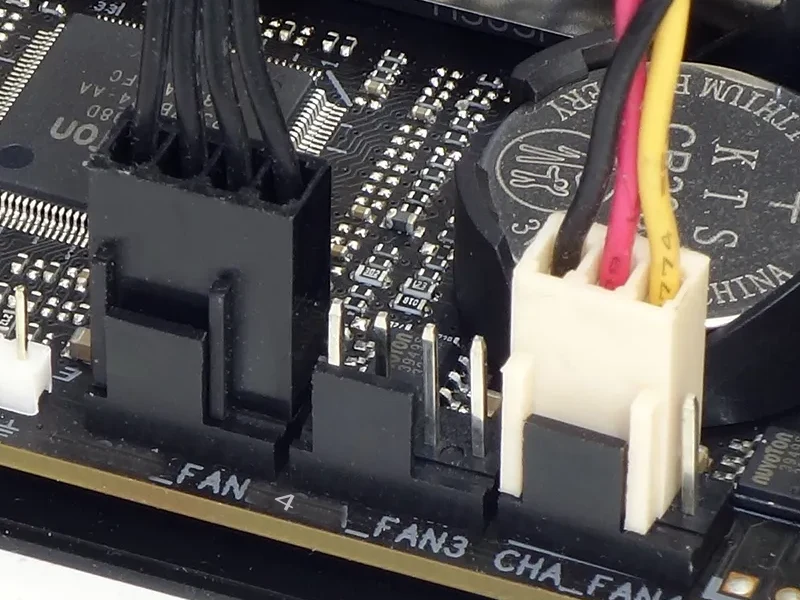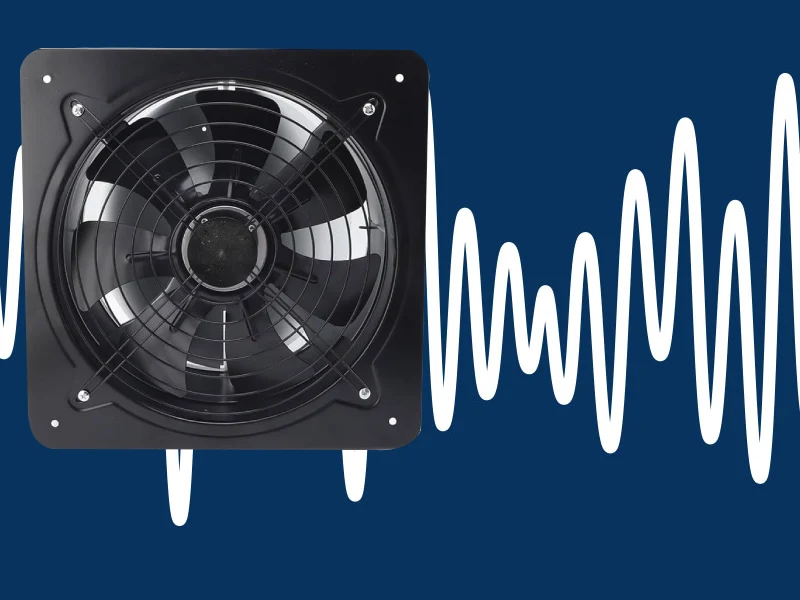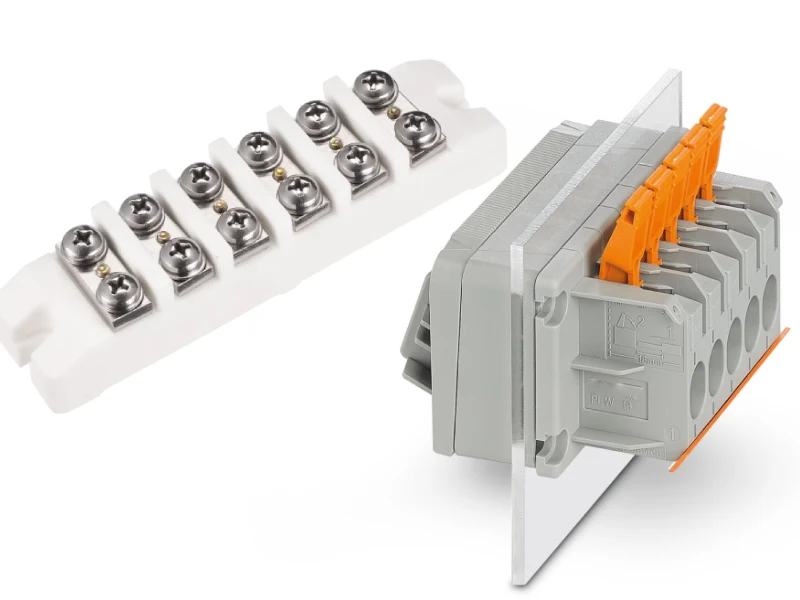If you’re wondering what is temperature monitoring system and why it matters, especially for an electrical enclosure, here’s the key: it helps you keep the internal temperature just right. This system tracks and controls heat inside electrical enclosures, ensuring your equipment stays safe and operates efficiently. When temperatures fluctuate too much, it can lead to serious issues like:
- Equipment damage or sudden failure
- Reduced lifespan of sensitive components
- Malfunctions in microprocessor devices
- Plant shutdowns and costly repairs
- Safety hazards, including fires or explosions
By using a reliable temperature monitoring system, you can prevent these problems and maintain smooth operation of your electrical enclosure.
Temperature Monitoring Key Takeaways
- Temperature monitoring systems keep electrical enclosures at safe temperatures to protect equipment and prevent failures.
- These systems use sensors to measure temperature and humidity, sending real-time data to controllers that adjust heating or cooling devices automatically.
- Key components include temperature sensors, heaters, thermostats, fans, air conditioners, data loggers, controllers, and alarms for full climate control and safety.
- Monitoring systems help avoid costly repairs, improve safety by preventing fires or damage, and increase equipment lifespan and efficiency.
- They are widely used in industries like manufacturing, data centers, pharmaceuticals, and cold chain logistics to ensure reliable and safe operations.
What is Temperature Monitoring System

Definition
You might ask, what is temperature monitoring system and how does it work inside electrical enclosures? The answer is pretty straightforward. A temperature monitoring system is a setup that keeps track of the temperature (and sometimes humidity) inside your electrical enclosure. It uses a sensor to measure the temperature in real time. The system then displays this data and can automatically adjust heating or cooling devices to keep everything within safe limits.
Most temperature monitoring systems for electrical enclosures include thermostats and hygrostats. These devices help maintain a stable environment, so your equipment doesn’t overheat or get damaged by condensation. You’ll find features like real-time data display, remote monitoring, and fast response times. The main goal is to keep your electrical equipment running smoothly by managing the climate inside the enclosure.
Tip: If you want reliable operation and fewer breakdowns, installing a temperature monitoring system in your electrical enclosure is a smart move.
You’ll notice that these systems don’t just measure temperature. They also work with humidity sensors, which help prevent moisture buildup. This is important because moisture can cause corrosion or short circuits. The system uses a sensor to detect changes and sends the information to a controller, which then decides if it needs to turn on a heater, fan, or air conditioner.
Here’s a quick look at the most common standards and certifications for temperature monitoring systems in electrical enclosures:
| Standard/Certification | What It Covers |
|---|---|
| UL 508A | Industrial control panels, enclosure construction, temperature performance |
| UL 50 / UL 50E | Design and testing for temperature rise limits, environmental protection |
| NEMA 250 | Environmental protection ratings for enclosures |
| UL/cUL | Safety under normal and fault conditions, fire resistance, temperature performance |
| IP Ratings (IP66, IP68) | Ingress protection and temperature resilience |
These standards make sure your enclosure can handle extreme temperatures and protect your equipment and operators.
Purpose
So, why do you need a temperature monitoring system in your electrical enclosure? Here are the main reasons:
- You get accurate measurement of temperature inside the enclosure.
- The system converts temperature data from the sensor into signals for monitoring and control.
- It keeps an eye on temperature changes, so you can spot overheating before it becomes a problem.
- The system provides feedback to control devices, helping you maintain safe and optimal temperature levels. This prevents equipment damage and keeps everything running efficiently.
Temperature monitoring systems also integrate with other industrial automation solutions. You can connect them to your building’s automation system using protocols like Modbus or BACnet. This means you can monitor and control your enclosure’s temperature from anywhere, using Ethernet, Wi-Fi, or even cellular networks. The sensor data gets logged and analyzed, and you receive alerts if something goes wrong.
- Temperature and humidity sensors work together to monitor both the equipment and the environment.
- You can set up real-time alerts and custom dashboards to track multiple enclosures at once.
- The modular design lets you expand the system as your needs grow.
If you work in industries like manufacturing, data centers, or pharmaceuticals, you know how important it is to keep your electrical enclosures at the right temperature. A temperature monitoring system helps you do just that, making sure your equipment lasts longer and operates safely.
Components

Temperature Sensors
You rely on temperature sensors to keep your electrical enclosure safe. These sensors constantly check the temperature inside the cabinet. You’ll find several types of sensors used in temperature monitoring devices. Some sensors, like fiber optic sensors, work well near high-voltage parts because they don’t conduct electricity. Infrared sensors measure surface temperature without touching anything. Wireless sensors make installation easy and let you place them wherever you need. Traditional wired sensors, such as RTDs and thermocouples, offer accurate readings but can be affected by electromagnetic interference. Many smart enclosures use integrated sensor platforms for complete monitoring.
| Sensor Type | Key Characteristics | Typical Application in Electrical Enclosure Monitoring |
|---|---|---|
| Fiber Optic Sensors (FOTS) | Immune to EMI, dielectric, safe for high-voltage contact | Direct contact with busbars, breaker contacts, high-voltage parts |
| Infrared (IR) Sensors | Non-contact, detects surface infrared radiation | Surface temperature of busbar joints, cable lugs |
| Wireless Sensors | Flexible, battery/energy harvesting, wireless data transmission | Retrofitting, flexible placement inside enclosures |
| Wired Sensors (RTD/Thermocouple) | Accurate, cost-effective, EMI susceptible | Ambient temperature inside cabinets, grounded components |
| Integrated OEM Solutions | Combines sensor types, smart monitoring, cloud/SCADA integration | Full condition monitoring (temperature, humidity, partial discharge) |
You need sensors that match your enclosure’s environment and the type of equipment inside. The right temperature sensors help your temperature monitoring device catch problems before they get serious.
Recommended products
Enclosure Heater
An enclosure heater keeps your electrical enclosure warm and dry. You use it to prevent condensation, frost, and freezing. The heater maintains the temperature at least 9°F above the outside air, stopping moisture and corrosion. Most heaters work with a thermostat for precise temperature control. You should install the heater for natural convection and easy access. Clean dust and check door seals regularly to keep the heater working well. In cold or harsh places, you might need higher wattage heaters or extra insulation.
- Prevents condensation and corrosion by keeping the enclosure warm.
- Uses thermostats for accurate temperature control.
- Needs proper installation for even heat distribution.
- Requires regular maintenance for best performance.
- Handles extreme cold with higher wattage and extra insulation.
Thermostat and Hygrostat
Thermostats and hygrostats are your main temperature monitoring devices for controlling climate inside enclosures. A thermostat measures temperature and switches heaters or coolers on and off. A hygrostat checks humidity and activates dehumidifiers or heaters to keep moisture low. Both devices help you avoid overheating, freezing, and condensation.
| Aspect | Thermostat | Hygrostat |
|---|---|---|
| Measured Parameter | Temperature | Humidity |
| Control Mechanism | Switches heating/cooling devices | Activates dehumidifiers/heaters |
| Role in Enclosures | Prevents overheating/freezing | Prevents condensation/moisture buildup |
| Typical Applications | Control panels, server cabinets | Data centers, telecom, medical cabinets |
| Additional Features | Alarms for temperature extremes | Data logging, remote monitoring |
Thermostats regulate temperature, while hygrostats focus on humidity. You can use a combined device called a hygrotherm for both.
Fan and Filter
Fan and filter systems help you cool your electrical enclosure efficiently. Fans create airflow, moving hot air out and bringing cooler air in. Filters keep dust and debris from entering. These systems use forced convection, which works faster than natural convection. Fans are compact and fit many enclosure sizes. You save energy and money compared to air conditioners. For high heat loads or tough environments, you might need closed-loop cooling or liquid cooling instead.
Tip: Fan and filter systems work best for moderate heat loads and clean environments.
Cabinet Air Conditioner
Cabinet air conditioners give you powerful cooling for electrical enclosures. They use a refrigeration cycle and smart sensors to keep the temperature steady. These units have high energy efficiency ratings and certifications like UL, CE, and ENERGY STAR. Features such as inverter compressors and EC fans help you save energy and lower costs. You get reliable cooling for sensitive electronics, even in harsh conditions.
| Device Type | Main Technical Feature | Energy Efficiency | Certifications and Features |
|---|---|---|---|
| Cabinet Air Conditioner | Refrigeration cycle, compressor, refrigerants | High | UL, CE, RoHS, ISO 9001, ENERGY STAR, inverter compressors, EC fans, smart sensors |
Data Loggers
Data loggers are essential temperature monitoring devices for electrical enclosures. You use them to record temperature readings over time. These devices use advanced sensors for accurate measurements. Many data loggers support wireless connectivity, so you can monitor remotely. They store data digitally, reducing manual errors and helping you analyze trends. You can track multiple points at once and get alerts if something goes wrong. Data loggers work well in harsh environments and run for long periods without attention.
- Accurate, factory-calibrated sensors
- Wireless monitoring and long battery life
- Certified for hazardous locations
- Multi-channel inputs for several sensors
- Reliable data storage and analysis
Controllers
Controllers manage temperature control inside your electrical enclosure. You choose from several types, depending on your needs. On-off controllers offer simple control, switching devices on or off. Proportional controllers adjust output based on temperature changes. PID controllers provide precise and stable temperature regulation. Multiloop controllers handle several control points at once. Safety limit controllers shut down equipment if temperatures get too high. Temperature switches give you basic, adjustable control.
- On-Off Controllers: Simple, binary control
- Proportional Controllers: Adjust output based on error
- PID Controllers: Precise, stable temperature control
- Multiloop Controllers: Manage multiple loops
- Safety Limit Controllers: Shut down on high temperature
- Temperature Switches: Economical, adjustable
Controllers fit standard DIN panels, making installation easy.
Alarms
Alarms protect your electrical enclosure by warning you about temperature problems. Heat sensors monitor changes and trigger alarms if temperatures go outside safe limits. You get real-time alerts, so you can act fast and prevent equipment damage. Alarms work with panels and remote systems, keeping you informed wherever you are. Some systems use pressure sensors to detect unsafe conditions and alert you without shutting down the process. Alarms help you maintain safety and avoid costly downtime.
Note: Alarms are vital for early detection of temperature anomalies and keeping your equipment safe.
System Operation
Temperature Detection
You rely on sensors to keep your electrical enclosure safe from temperature excursions. These sensors pick up even tiny temperature differences between your equipment and the surrounding air. Some sensors, like non-contact infrared types, measure surface temperature without touching anything. Others combine temperature and humidity readings for more complete monitoring.
Sensors connect directly to controllers inside your enclosure. You can also use wireless sensor networks, which send data in real time using protocols like ZigBee. This setup lets you place sensors wherever you need them, even in hard-to-reach spots. Wireless sensors transmit data to gateways, which bridge the information to cloud platforms or local control systems. You get continuous monitoring and instant feedback, so you can spot temperature deviations before they cause trouble.
Tip: Wireless sensors make installation easier and help you expand your monitoring system as your needs grow.
Here’s how the detection process works:
- Sensors measure temperature and humidity inside the enclosure.
- Wireless networks send data instantly to gateways.
- Gateways connect to cloud or local control systems for analysis.
- You receive real-time alerts if sensors detect temperature excursions.
Data Recording
You need accurate data to keep your electrical enclosure running smoothly. Sensors like thermocouples, RTDs, and thermistors convert temperature changes into electrical signals. These signals go to data loggers, which record and store the information for later review.
Digital temperature monitoring systems use wireless technology for remote temperature monitoring. You can check readings from anywhere using Wi-Fi, Bluetooth, or LoRa. This makes it easy to monitor enclosures in remote or hazardous locations. Data loggers have high storage capacity and long battery life, so you don’t have to worry about losing important information.
You can set up your system to send alerts by SMS or email when temperature deviations occur. This helps you respond quickly and prevent equipment damage. Proper sensor placement and regular calibration keep your data accurate. Data loggers also let you track trends and spot problems early, which is vital for maintaining optimal conditions.
- Sensors send data to loggers for continuous recording.
- Wireless systems allow remote access and control.
- Alerts notify you when preset thresholds are crossed.
- Data loggers support simultaneous recording of multiple parameters.
- Trend analysis helps you catch temperature excursions before they become serious.
Alerts and Responses
You want to know right away if something goes wrong inside your electrical enclosure. Temperature alert systems use real-time alerts to keep you informed. Sensors feed data into centralized dashboards, which monitor conditions around the clock. When sensors detect temperature deviations, the system generates alerts based on severity and equipment importance.
Temperature notification systems send alarms to maintenance staff through local displays, remote dashboards, or mobile devices. You get instant notifications, so you can act fast. If the system detects a critical temperature excursion, it can automatically activate cooling or heating devices. In extreme cases, it may shut down equipment to prevent damage.
Adaptive control algorithms adjust system operations based on sensor data. This keeps your enclosure at the right temperature and helps avoid costly repairs. Event logging supports preventive maintenance and improves reliability. Unified management platforms let you monitor multiple enclosures at once, giving you complete visibility and control.
Note: Real-time alerts and alarms are essential for protecting your equipment and keeping your operations safe.
Here’s what happens when the system detects a problem:
- Sensors pick up temperature deviations or excursions.
- The system sends real-time alerts to your dashboard or mobile device.
- Automatic responses activate cooling, heating, or shutdown protocols.
- Event logs help you track issues and plan maintenance.
- You stay ahead of problems with instant notifications and adaptive controls.
Benefits of Temperature Monitoring Solution
Equipment Protection
You want your electrical equipment to last as long as possible. A temperature monitoring solution helps you do just that. By keeping the temperature inside your electrical enclosure within safe limits, you protect sensitive components from overheating. Overheating can cause parts to degrade or fail early. When you manage heat load, check ambient conditions, and use the right cooling methods, you keep your equipment running smoothly. Thermochromic indicators give you instant visual alerts if things get too hot, so you can act fast. This approach preserves the integrity of your system and ensures product integrity. You avoid costly repairs, extend the life of your equipment, and keep your operations on track.
- Prevents overheating and early component failure
- Maintains product integrity by avoiding temperature swings
- Reduces maintenance costs and downtime
Safety
Safety should always come first in your facility. A temperature monitoring solution gives you peace of mind by reducing the risk of fires, explosions, and other hazards. When you use thermostatically controlled cooling, you keep the temperature steady and prevent your electronics from reaching dangerous levels. Early detection of overheating—like spotting burn marks or smelling something odd—lets you fix problems before they become emergencies. Advanced systems, such as those with fiber optic sensors, catch abnormal temperatures right away. This helps you avoid safety incidents and protects everyone who works near your electrical enclosures.
Remember: Early detection through temperature monitoring allows you to step in before irreversible damage or safety hazards occur.
- Prevents overheating-related failures and fire risks
- Protects workers from heat-related health issues
- Ensures the integrity of your electrical infrastructure
- Specialized enclosures add another layer of safety and integrity
Efficiency
You want your operations to run smoothly and efficiently. A temperature monitoring solution helps you achieve that goal. Continuous monitoring gives you real-time data, so you can spot problems early and plan maintenance before something breaks. This proactive approach keeps your equipment in top shape and maximizes uptime. When you integrate temperature data with alarms and automated controls, you respond quickly to any issues. You also save money by reducing energy waste and avoiding emergency repairs. The integrity of your system improves, and you get more value from your investment.
| Category | Annual Value | Explanation/Calculation |
|---|---|---|
| Program Costs | $25,000 | Includes inspections, analysis, repairs |
| Prevented Losses | $190,000 | Savings from avoiding failures |
| Energy Savings | $18,000 | Lower resistance, less waste |
| Labor Efficiency | $12,000 | Fewer emergency repairs |
| Total Annual Savings | $220,000 | Sum of all savings |
| ROI | 8.8:1 | (Total Savings – Costs) / Costs |
| Payback Period | 1.4 months | Time to recover program costs |
You see a strong return on investment, with most organizations recovering their costs in less than two months. By maintaining the integrity of your electrical enclosures, you boost efficiency, reduce risks, and keep your business running at its best.
Applications
Electrical enclosure temperature monitoring systems play a vital role in many industries. You’ll find them wherever you need to protect sensitive equipment and maintain safe, stable conditions. Here are some of the most common environments where you’ll see these systems in action:
- Telecommunications sites and base stations
- Industrial automation and manufacturing plants
- Energy and utility substations
- Food and beverage processing facilities
- Pharmaceuticals production and storage
- Security and surveillance installations
- Dusty or corrosive environments like wastewater treatment or chemical plants
- Data centers and IT rooms
- Transportation hubs and logistics centers
Let’s look at how these systems work in a few critical areas.
Cold Chain Monitoring
You know how important it is to keep food and pharmaceuticals safe during storage and transportation. Cold chain monitoring uses temperature monitoring systems inside electrical enclosures to track and control the climate for temperature-sensitive products. If you work in food distribution, you need to make sure your products stay fresh from the warehouse to the store. In pharmaceuticals, you must protect vaccines and medicines from temperature swings that could ruin their effectiveness.
With remote monitoring, you get real-time updates on every step of the journey. This gives you cold chain visibility, so you can spot problems before they lead to spoilage or product loss. You can set up alerts for any temperature changes, making it easy to act fast. Cold chain monitoring helps you meet strict regulations and keeps your customers safe. You also reduce waste and save money by preventing spoilage.
Tip: Use remote sensors and data loggers to improve cold chain visibility and keep your food and pharmaceuticals safe during transportation.
Data Centers
Data centers rely on electrical enclosure temperature monitoring to keep servers and IT hardware running smoothly. You need to avoid overheating, which can cause downtime and expensive repairs. Real-time monitoring lets you optimize cooling systems and spot temperature changes right away. This helps you prevent hardware failures and maintain uptime.
Remote access means you can check conditions from anywhere, making it easier to manage large facilities. You can use the data to plan maintenance and upgrades, saving energy and reducing costs. By keeping your data center within safe temperature ranges, you protect sensitive equipment and improve efficiency.
Industrial Use
Industrial environments present unique challenges for temperature monitoring. You deal with harsh conditions, dust, vibrations, and extreme temperatures. Electrical enclosures in these settings protect control systems, machinery, and sensitive electronics. You need accurate sensors that can handle tough environments and still deliver reliable data.
Remote monitoring helps you track conditions in real time, even in hard-to-reach places. You can set up automated alerts and responses to keep everything running safely. In industries like food processing, pharmaceuticals, and chemical manufacturing, you must meet strict standards for safety and quality. Temperature monitoring systems help you comply with regulations, reduce downtime, and maintain product integrity.
- Use remote sensors for hard-to-access enclosures.
- Choose durable, high-precision sensors for harsh industrial settings.
- Set up automated alerts to respond quickly to temperature changes.
Note: Reliable temperature monitoring in industrial environments protects your equipment, ensures safety, and keeps your operations efficient.
You’ve seen how an electrical enclosure temperature monitoring system keeps your equipment safe, efficient, and compliant. By using sensors and smart controls, you catch temperature issues early and avoid costly downtime. These systems help you meet strict industry standards and protect sensitive products like pharmaceuticals and electronics. If you want to boost reliability and safety in your facility, consider adding a temperature monitoring solution to your electrical enclosures. Your operations will thank you! 🚀
FAQ
How does a temperature monitoring system protect your electrical enclosure?
Temperature monitoring systems track heat levels inside your enclosure. Sensors send data to controllers. If the temperature goes too high, the system triggers cooling devices or alarms. You avoid equipment damage and keep everything running safely.
Can you install a temperature monitoring system in any electrical enclosure?
Yes, you can add a temperature monitoring system to most enclosures. Choose sensors and controllers that fit your enclosure size and environment. Wireless options make installation easier, especially in hard-to-reach places.
What features should you look for in a temperature monitoring system?
Look for real-time alerts, remote access, and accurate sensors. Data logging helps you track trends. Choose systems with easy integration to your existing controls. Reliable alarms and automatic responses keep your equipment safe.
Do temperature monitoring systems require regular maintenance?
You should check sensors and controllers often. Clean filters and inspect heaters or fans. Replace batteries in wireless devices. Regular maintenance keeps your system accurate and extends its life.
Why is humidity monitoring important for electrical enclosures?
Humidity can cause condensation and corrosion inside your enclosure. A temperature monitoring system with humidity sensors helps you prevent moisture buildup. You protect sensitive electronics and avoid costly repairs.
Conclusion
Understanding What is Temperature Monitoring System is key to protecting equipment, maintaining safety, and ensuring operational efficiency. By choosing a reliable, customizable system from an experienced manufacturer, businesses can reduce downtime, prevent costly damage, and meet industry compliance.
We offer tailored solutions to match your specific needs, delivering high-quality products with fast delivery. Contact us today for expert advice, competitive pricing, and custom manufacturing services that fit your operational goals.

